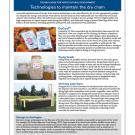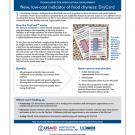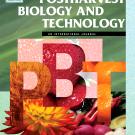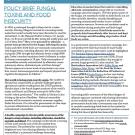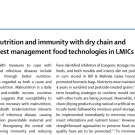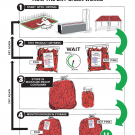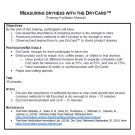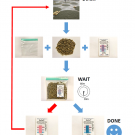The DryCard™ is an inexpensive device developed by UC Davis researchers for determining if dried food is dry enough to prevent mold growth during storage. Moldy food can have a bad taste and may be contaminated with harmful toxins. Molds will not grow if the air around a product is lower than 65 percent relative humidity.
How does the DryCard™ work?
The DryCard™ incorporates a cobalt chloride humidity indicator strip that changes color with changing relative humidity. When a dry product is stored in a sealed container, mold will not grow on it if the equilibrium relative humidity within the container is lower than 65 percent.
Sign up to work with the DryCard™
Are you interested in...
- Using and/or purchasing the DryCard™?
- Distributing the DryCard™ through your organization?
- Manufacturing and/or selling the DryCard™?
- Conducting research related to the DryCard™?
Visit the DryCard™ sign-ups to register your interest and to receive notifications as the DryCard™ becomes more widely available.
The Horticulture Innovation Lab team continues to work with partners to test and improve the DryCard™ in real-world situations and to explore options for making this tool more widely available. Please sign up to express your interest in working with us.
How do you measure dryness, with the the DryCard™
Place the DryCard™ and a sample of the dried product in a moisture tight container, such as a sealed plastic bag or a jar. The card will display an estimate of the relative humidity within the sealed container in approximately 30–60 minutes, and waiting for 2 hours will provide a more accurate measure. If the indicator strip on the card turns pink, then the product is too wet for safe storage. If the strip turns blue or grey, then the product is adequately dried.
If the DryCard™ indicates the product is too wet to be stored safely, then the product should be used immediately or dried further before storage.
DryCard™ is reusable: A DryCard™ can be reused many times. Store the card in a plastic bag to prevent accidental contact with water or high humidity conditions (near 100% relative humidity), which will make the card difficult to read. The indicator strip contains cobalt chloride. Do not remove the strip from the card or leach the cobalt chloride by placing it in water.
How to use the DryCard™ when drying food products
Using the DryCard™ in conjunction with the drying process requires a different procedure to accurately determine product dryness. Immediately after drying, a product will have an overly dried surface, giving an erroneously low estimate of equilibrium relative humidity. For food products that have just been removed from a dryer, it will take time to equilibrate the humidity in the air around the product, thus allowing an accurate measurement of its equilibrium relative humidity.
Where to buy the DryCard™
Ghana: Ofori Agrochemical Services - aoagro2017@gmail.com
India: Vivia Foundation - srajanpavani@gmail.com
Kenya: BetterCrops Ltd. - bettercropsltd@gmail.com
Myanmar: Myanmar Innovative Life Sciences - ops1@milsciences.com
Nepal: R&D Innovative Solutions - rnd2070@gmail.com
Nigeria: Willow Foundation - willoempowerment@gmail.com
Rwanda: Development Solutions Consulting Ltd. - sniyonsenga@gmail.com
Tanzania: Market Infrastructure, Value Addition and Rural Financial Services (MIVARF) - mjawabj@gmail.com
Thailand: Go Organics - spencer@goorganics.org
Uganda: Mwino Group - baguma.andrew@yahoo.com
If a DryCard™ is placed in a sealed container with product that has just been removed from drying, the color of the humidity strip will continue to change toward a wetter indication for many hours. The color will not stabilize until moisture within the product has equilibrated. For example, rice must be held for about 4 hours after being removed from a heated air dryer before the humidity of the air around the rice reflects the equilibrium relative humidity. Larger diameter products take longer. For example, large tree nuts require about 24 hours of equilibration before an accurate measurement can be taken. (This source of error also affects electronic moisture meters.)
There are three ways to deal with the issue of measuring recently dried products:
- Product dried in the open sun is usually collected in the evening and stored in a protected area. Put a DryCard™ in the bagged product when storing it, and check the indicator the next morning before additional drying.
- Break up or grind a sample of the product, then put all of the sample in a container with a DryCard™. Wait 30-60 minutes, until the paper strip no longer changes color to read the indicator. The wait time will depend on the type of product, how finely it is broken up and the magnitude of the moisture gradient within the product. Experience with an individual product will tell a user how much wait time is needed for an accurate reading.
- Take a reading with DryCard™ after 30–60 minutes, but realize that the commodity is actually wetter than indicated. With experience the dryer operator will learn the color associated with a properly dried product.

